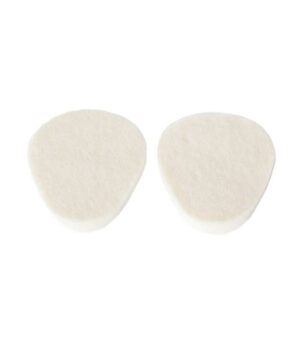Heel Elevation
Heel Elevation
Ray McClanahan, D.P.M.
Heel elevation is present on almost all shoes.
Since we learned to walk, we have been wearing shoes. Some of us even before then. Our parents wisely wished to protect our feet and were not aware of the limiting effects shoes were having on the development of our feet. Almost all of those shoes had a heel that was elevated above the surface more than the front part of the shoe covering our toes and the ball of our feet. Consequently, we have ALL developed contracted or shortened lower leg muscles on the back of our leg.
The muscles that we mostly talk about are the calf muscles or the gastrocnemius and the soleus. There are actually 3 more very important muscles that are also in the back of the leg under the calf muscles that are also extremely important in helping our arch to function properly (posterior tibial, flexor hallucis longus, and flexor digitorum longus) as well as helping our toes perform their natural functions of grasping, balancing and directing our feet forward while we are pushing off of our toes (propulsion).
This is an extremely serious situation considering the fact that the shortened lower leg muscles are now contributing to faulty foot function in a number of ways. The most significant foot fault caused by elevated heels is that shortened posterior leg muscles pull improperly on the back of the heel to unnaturally increase the amount of flattening the arch will undergo. Said another way, chronically shortened lower leg muscles increase pronation of the foot and ankle. Pronation is the sequence of movements that has been given the most attention by foot care providers as being the cause of most foot and leg problems. If indeed pronation is the prime culprit for most foot and leg problems, it makes good sense to lower the elevation of the heel on your footwear so as to not allow the shoe to further shorten your lower leg muscles and increase your pronation.
Increasing your pronation certainly is cause for concern especially given all the attention to this movement by foot care providers and sports medicine providers, but in this author’s opinion, it is only one of many negative effects brought about by wearing a shoe with an elevated heel.
A more significant and potentially debilitating effect of heel elevation is that there is an involuntary stretch reflex built into the posterior lower leg, that can only be activated if the heel is allowed to come close to the ground. This does not occur in most shoes available to consumers today, EVEN amongst athletic models.
The problem here is that activation of that involuntary reflex is something that should happen with every step to help our forefoot with its most important task of propulsion.
Sadly most shoe wearing people do not get to experience normal gait and propulsion.
This may not seem like that big of a deal because after all we can still walk and many of us are able to participate in athletic endeavors. But it is a big deal when you consider that walking and participation in sport can not occur naturally, and our efforts are undeniably hampered by something so seemingly simple as the coverings we put on our feet. Shoes and their construction have been hypothesized to be the single most important identifiable feature that separates our long distance runners from those who grew up in countries where their feet and legs developed normally.
So next time you are in the market for a pair of shoes, bear in mind the negative features described above and choose accordingly. Your feet and your whole body will thank you.














